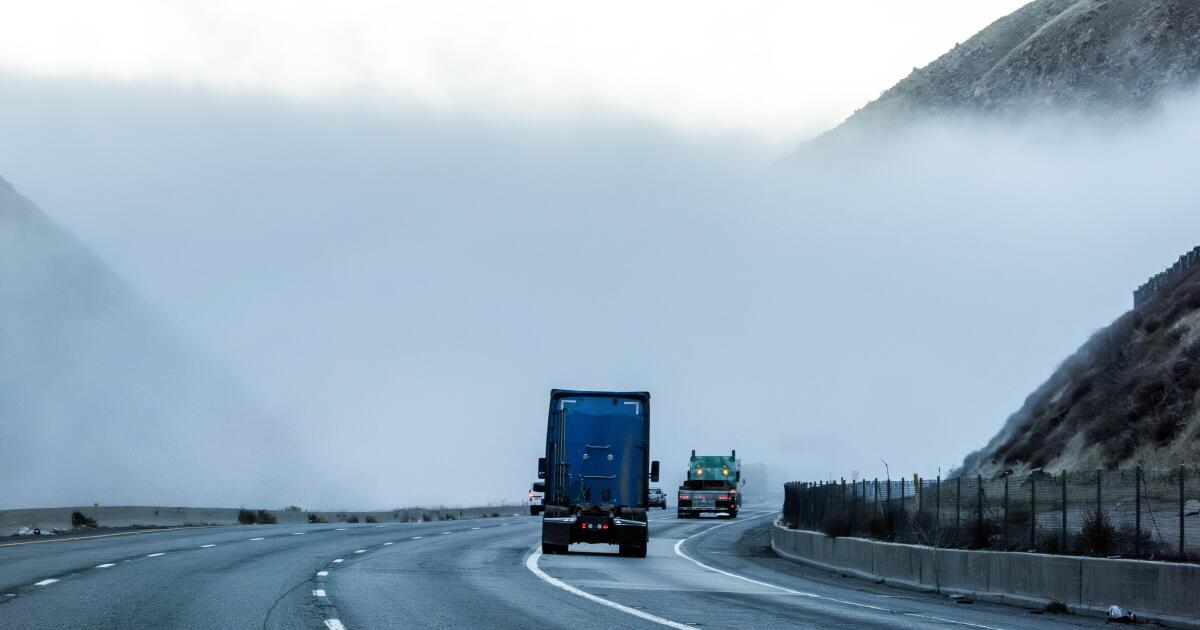Science
PG&E is offered $15-billion federal loan to improve grid, expand storage capacity

The Biden administration said Tuesday it was offering Pacific Gas & Electric a record $15-billion loan guarantee to help the utility upgrade its transmission lines, which have been blamed in causing wildfires, and make other improvements to meet fast-rising energy use.
The commitment, which still must be finalized, would help PG&E expand hydropower generation and battery storage, the utility said in a release. The money would also help PG&E extend its transmission system to connect with new clean energy facilities.
“Investments in a clean and resilient grid for Northern and Central California will have significant returns for our customers in safety, reliability and economic growth,” said Patti Poppe, the company’s chief executive.
The company said the loan would come with a lower interest rate than what it could otherwise obtain and save customers as much as $1 billion over the years.
“We would pass along savings from our lower cost of debt to our customers as we work to modernize the grid and stabilize customer bills,” said Lynsey Paulo, a PG&E spokesperson.
Electric rates at the utility have soared by 56% over the last three years, according to a new report by the Public Advocate’s Office at the state Public Utilities Commission, more than either Southern California Edison or San Diego Gas & Electric.
This year, PG&E hiked rates four times. The company’s rate requests must be approved by the utilities commission, whose members are appointed by Gov. Gavin Newsom and confirmed by the state Senate, which is controlled by a supermajority of Democrats.
Last year, the company recorded $2.2 billion in profits — an increase of almost 25% over the year before.
Paulo said the company was now trying to keep average annual residential gas and electric bill increases within 2% to 4% through 2026.
The announcement of the federal loan drew skeptics on Tuesday.
“This loan is less a solution for California’s energy future and more a bailout for PG&E,” said Ken Cook, president of the Environmental Working Group, a nonprofit advocacy group. “Somebody must repay it, and it certainly won’t be the company’s shareholders or executives.”
The Biden administration has been hurrying to release more money from the 2022 Inflation Reduction Act before President-elect Donald Trump takes office in January.
The loan guarantee is the biggest commitment to date from the Department of Energy’s Loan Programs Office. The money would be provided to PG&E in installments over several years. Loan office officials must approve the projects it pays for.
Federal officials said the company must still satisfy certain technical, legal, environmental and financial conditions before the loan is funded.
In 2019, Pacific Gas & Electric announced a $13.5-billion settlement for several Northern California wildfires sparked by its equipment that killed dozens of people and destroyed thousands of homes and businesses. Those fires included one that nearly destroyed the town of Paradise in 2018, the deadliest in state history.
The company had filed for bankruptcy earlier that year. It reorganized and emerged from bankruptcy in July 2020.

Science
Video: Engineer Is First Paraplegic Person in Space

new video loaded: Engineer Is First Paraplegic Person in Space
transcript
transcript
Engineer Is First Paraplegic Person in Space
A paraplegic engineer from Germany became the first wheelchair user to rocket into space. The small craft that blasted her to the edge of space was operated by Jeff Bezos’ company Blue Origin.
-
Capsule touchdown. There’s CM 7 Sarah Knights and Jake Mills. They’re going to lift Michi down into the wheelchair, and she has completed her journey to space and back.

December 21, 2025
Science
This City’s Best Winter Show Is in Its Pitch-Dark Skies

The result is a starry sky visible even from the heart of the city. Flagstaff’s Buffalo Park, just a couple miles from downtown, measures about a 4 on the Bortle scale, which quantifies the level of light pollution. (The scale goes from 1, the darkest skies possible, to 9, similar to the light-polluted night sky of, say, New York City. To see the Milky Way, the sky must be below a 5.)
Science
Social media users in the Central Valley are freaking out about unusual fog, and what might be in it

A 400-mile blanket of fog has socked in California’s Central Valley for weeks. Scientists and meteorologists say the conditions for such persistent cloud cover are ripe: an early wet season, cold temperatures and a stable, unmoving high pressure system.
But take a stroll through X, Instagram or TikTok, and you’ll see not everyone is so sanguine.
People are reporting that the fog has a strange consistency and that it’s nefariously littered with black and white particles that don’t seem normal. They’re calling it “mysterious” and underscoring the name “radiation” fog, which is the scientific descriptor for such natural fog events — not an indication that they carry radioactive material.
An X user with the handle Wall Street Apes posted a video of a man who said he is from Northern California drawing his finger along fog condensate on the grill of his truck. His finger comes up covered in white.
“What is this s— right here?” the man says as the camera zooms in on his finger. “There’s something in the fog that I can’t explain … Check y’all … y’all crazy … What’s going on? They got asbestos in there.”
Another user, @wesleybrennan87, posted a photo of two airplane contrails crisscrossing the sky through a break in the fog.
“For anyone following the dense Tule (Radiation) fog in the California Valley, it lifted for a moment today, just to see they’ve been pretty active over our heads …” the user posted.
Scientists confirm there is stuff in the fog. But what it is and where it comes from, they say, is disappointingly mundane.
The Central Valley is known to have some of the worst air pollution in the country.
And “fog is highly susceptible to pollutants,” said Peter Weiss-Penzias, a fog researcher at UC Santa Cruz.
Fog “droplets have a lot of surface area and are suspended in the air for quite a long time — days or weeks even — so during that time the water droplets can absorb a disproportionate quantity of gasses and particles, which are otherwise known as pollutants,” he said.
He said while he hasn’t done any analyses of the Central Valley fog during this latest event, it’s not hard to imagine what could be lurking in the droplets.
“It could be a whole alphabet soup of different things. With all the agriculture in this area, industry, automobiles, wood smoke, there’s a whole bunch” of contenders, Weiss-Penzias said.
Reports of the fog becoming a gelatinous goo when left to sit are also not entirely surprising, he said, considering all the airborne biological material — fungal spores, nutrients and algae — floating around that can also adhere to the Velcro-like drops of water.
He said the good news is that while the primary route of exposure for people of this material is inhalation, the fog droplets are relatively big. That means when they are breathed in, they won’t go too deep into the lungs — not like the particulate matter we inhale during sunny, dry days. That stuff can get way down into lung tissue.
The bigger concern is ingestion, as the fog covers plants or open water cisterns, he said.
So make sure you’re washing your vegetables, and anything you leave outside that you might nosh on later.
Dennis Baldocchi, a UC Berkeley fog researcher, agreed with Weiss-Penzias’ assessment, and said the storm system predicted to move in this weekend will likely push the fog out and free the valley of its chilly, dirty shawl.
But, if a high pressure system returns in the coming weeks, he wouldn’t be surprised to see the region encased in fog once again.
-

 Iowa1 week ago
Iowa1 week agoAddy Brown motivated to step up in Audi Crooks’ absence vs. UNI
-

 Iowa1 week ago
Iowa1 week agoHow much snow did Iowa get? See Iowa’s latest snowfall totals
-

 Maine7 days ago
Maine7 days agoElementary-aged student killed in school bus crash in southern Maine
-

 Maryland1 week ago
Maryland1 week agoFrigid temperatures to start the week in Maryland
-

 New Mexico6 days ago
New Mexico6 days agoFamily clarifies why they believe missing New Mexico man is dead
-

 South Dakota1 week ago
South Dakota1 week agoNature: Snow in South Dakota
-

 Detroit, MI1 week ago
Detroit, MI1 week ago‘Love being a pedo’: Metro Detroit doctor, attorney, therapist accused in web of child porn chats
-

 Health1 week ago
Health1 week ago‘Aggressive’ new flu variant sweeps globe as doctors warn of severe symptoms




















